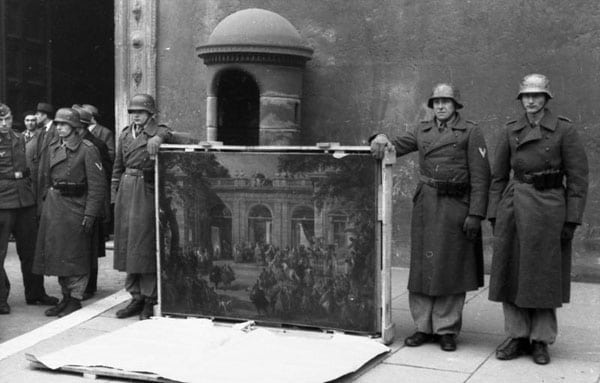
October 5, 2018; Washington Post
“It may have taken 13 years, but another painting looted by the Nazis during World War II will be given back to the family of Jewish Dutch art dealer Jacques Goudstikker,” reports Peggy McGlone in the Washington Post.
The trustees of the Virginia Museum of Fine Arts (VMFA) in Richmond, Virginia, voted last week to return Madonna and Child Enthroned with Saints Nicholas of Tolentino and Sebastian to Marei von Saher, Goudstikker’s sole heir.
“Goudstikker,” McGlone adds, “had a vast collection, some of which was looted by Adolf Hitler’s deputy Hermann Göring.”
The 16th-century painting had been recovered by the Allies in 1945 and turned over to the Dutch. But the Dutch government sold it to an unknown buyer instead of returning it to its owner; from there, it went to a New York gallery before the Richmond museum acquired it in 1958.
Von Saher, McGlone notes, “has resolved claims for more than 50 works of art from at least seven countries and more than a dozen museums in the United States and abroad.”
Sign up for our free newsletters
Subscribe to NPQ's newsletters to have our top stories delivered directly to your inbox.
By signing up, you agree to our privacy policy and terms of use, and to receive messages from NPQ and our partners.
On the decision to return the artwork, VMFA director Alex Nyerges says, “For us it’s not even a choice—it’s an obligation. A work of art belongs to its owner, and any work that is illegally obtained, in this case stolen by the Nazis, belongs to the original owners.”
The VMFA’s action may seem like common sense, but, McGlone, citing art history professor Jonathan Petropoulos, notes that “reclamation of Nazi-looted art is a challenge for museums around the world.” Each claim is unique.
One case that NPQ profiled, involving the same claimant, illustrates some of these complexities. In that case, the Norton Simon Museum of Pasadena, California, opposed the claim. This year, the museum won the right to hold onto “a pair of 16th-century wood panels by Lucas Cranach the Elder…appraised at $24 million” because, the Court ruled that a 1951 Dutch deadline to request the art’s return had passed, which “which made the eventual [Dutch government] sale to the Norton Simon Museum lawful.” But this museum victory was not without controversy. The Pasadena Star News reports that Eric Simon, the late Norton Simon’s grandson, was voted off the board because of what Simon calls “his longstanding campaign to support the family who sued the museum.” Simon adds that in his view, “those paintings, with the history they have, they loom as a kind of scar on the museum.”
As for the Richmond museum, Petropoulos tells McGlone that, “The VMFA did the right thing and acted in a manner consistent with the Washington Conference Principles. The [museum] merits praise for the decision.” These principles, developed in 1998, provide a non-binding framework to resolve issues concerning Nazi-confiscated art.
“The painting,” notes McGlone, “is the third Nazi-looted work the VMFA has returned. The others were a 16th-century French painting returned to an Austrian family in 2004 and a Flemish portrait to a Polish family in 2005.” Once, the VMFA actually gained art from a claim. This occurred, McGlone explains, in 2016, when “the Museum of Modern Art in New York determined that a major painting by German expressionist artist Ernst Ludwig Kirchner belonged to the same family that had given 200 works to the Richmond museum in a 2009 gift and purchase agreement.”—Steve Dubb













